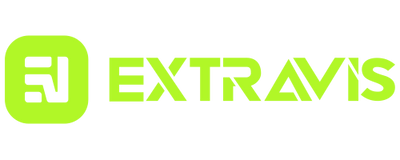For pet lovers who also value a clean home or suffer from allergies, choosing the right pet can make all the difference. While no breed is 100% hypoallergenic, some dogs and cats naturally shed less and produce fewer allergens, making them more suitable for allergy-prone households or those seeking less fur cleanup.
In this article, we compare some of the best low-shedding and hypoallergenic dog and cat breeds, explain why they shed less, and offer practical tips to reduce allergens in your home.
🐕 Why Some Pets Shed Less or Cause Fewer Allergies
Shedding and allergic reactions are linked to dander, saliva proteins, and hair length. Some animals:
- Produce less Fel d 1 (in cats) or Can f 1 (in dogs), the main proteins behind allergic reactions.
- Have hair instead of fur, which grows longer and falls out less frequently.
- Shed less due to their genetics, coat type, or regular grooming needs.
Choosing a low-shedding breed means less pet hair on your furniture, floors, and clothes—saving you time and helping keep your home cleaner with minimal effort.
🐶 Best Low-Shedding Dog Breeds
1. Poodle (Standard, Miniature, Toy)
- Coat Type: Curly, dense hair
- Why It’s Great: Poodles are considered one of the most hypoallergenic breeds. Their tight curls trap loose hair and dander, preventing it from spreading.
- Grooming Needs: High. Requires regular brushing and professional grooming every 4–6 weeks.
2. Bichon Frise
- Coat Type: Soft, curly
- Why It’s Great: Bichons don’t shed much, and their double coat helps reduce allergens.
- Grooming Needs: High. Needs frequent brushing and trimming.
3. Portuguese Water Dog
- Coat Type: Dense, curly or wavy
- Why It’s Great: Known for their minimal shedding and allergy-friendly coats.
- Grooming Needs: Moderate to high. Regular grooming required.
4. Shih Tzu
- Coat Type: Long, flowing hair
- Why It’s Great: Shih Tzus have hair that grows continuously, much like human hair.
- Grooming Needs: High. Requires daily brushing or regular trims.
5. Basenji
- Coat Type: Short and fine
- Why It’s Great: This breed hardly sheds and is known as the “barkless dog.”
- Grooming Needs: Low. Occasional brushing is enough.
🐱 Best Low-Shedding Cat Breeds
1. Sphynx
- Coat Type: Hairless (with fine fuzz)
- Why It’s Great: With no fur to shed, the Sphynx is ideal for keeping your home hair-free.
- Grooming Needs: Moderate. Requires regular baths to remove oil buildup.
2. Russian Blue
- Coat Type: Short, dense double coat
- Why It’s Great: Produces less Fel d 1 protein and has low shedding.
- Grooming Needs: Low. Weekly brushing is sufficient.
3. Balinese
- Coat Type: Long but single coat
- Why It’s Great: Sometimes called the “hypoallergenic Siamese,” Balinese cats produce less Fel d 1 protein.
- Grooming Needs: Moderate. Brush weekly to manage loose hair.
4. Bengal
- Coat Type: Sleek and short
- Why It’s Great: Their unique coat sheds minimally and they often enjoy water and baths.
- Grooming Needs: Low. Weekly brushing helps manage loose hairs.
5. Oriental Shorthair
- Coat Type: Short, fine coat
- Why It’s Great: Minimal shedding and a lower level of allergens.
- Grooming Needs: Low. Brushing once a week is enough.
🏡 Keeping Your Home Allergy- and Hair-Free
Even with a low-shedding breed, some grooming and cleaning are still required. Here are a few tips to maintain a clean, fur-free home:
1. Invest in a Pet-Specific Robot Vacuum
Daily cleaning is a game changer—especially with devices like the Extravis V5 Robot Vacuum, which is equipped with advanced LiDAR technology and tangle-free brushes to capture pet hair, dander, and debris efficiently.
The V5 navigates around pet bowls, furniture, and sleeping spots, removing allergens and fur before they settle in.
2. Groom Regularly
Regardless of breed, grooming helps reduce loose hair and dander:
- Brush short-haired pets weekly.
- Long-haired breeds need more frequent grooming.
- Use HEPA-filtered vacuums and air purifiers to minimize airborne allergens.
3. Wash Bedding and Soft Surfaces Often
Pet beds, throw pillows, and blankets can trap fur and allergens. Use washable covers and clean them weekly.
4. Designate Pet-Free Zones
Keep bedrooms or upholstered furniture pet-free to reduce exposure to fur and allergens.
✅ Choosing the Right Pet for You
Here are a few things to consider before bringing a low-shedding breed into your home:
- Allergy severity: If your allergies are severe, spend time with the breed first to test your reaction.
- Lifestyle compatibility: Some low-shedding pets need significant grooming or exercise. Match their needs to your lifestyle.
- Commitment: All pets, even hypoallergenic ones, require care, cleaning, and love.
🐾 Final Thoughts
A clean home and a happy pet don’t have to be at odds. Choosing a low-shedding or hypoallergenic breed—whether it’s a poodle or a Russian Blue—can make pet ownership more manageable for allergy sufferers and cleanliness-conscious households.
Paired with smart grooming routines and cleaning tools like the Extravis V5 Robot Vacuum, you can enjoy all the joys of a pet without the endless battle against fur.
Whether you're team cat or team dog, there's a breed out there that suits your needs and keeps your home looking fresh.

